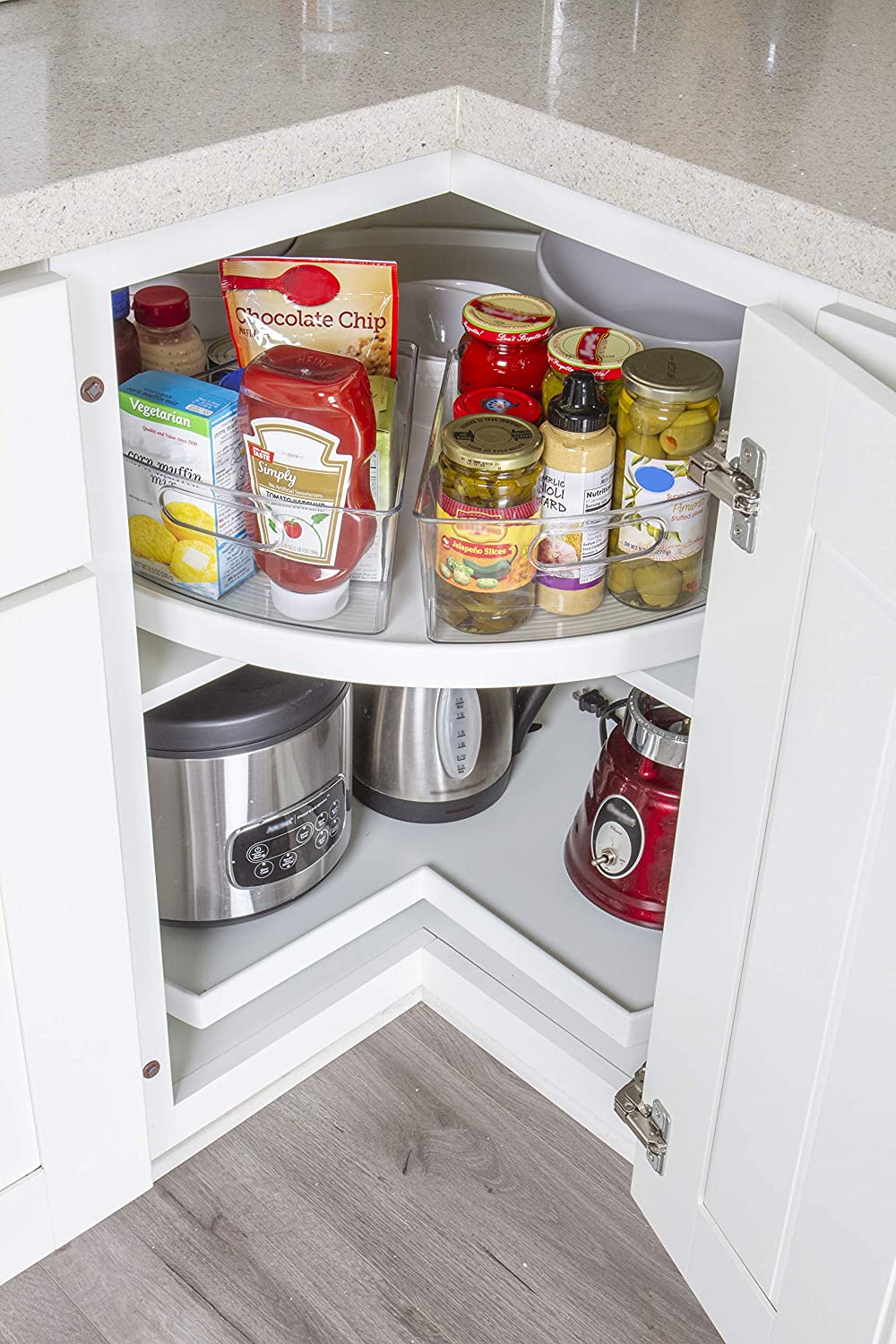

Articles
What To Put In A Lazy Susan Cabinet
Modified: October 19, 2024
Maximize pantry storage with a lazy susan cabinet. Effortlessly access and organize kitchen essentials with this space-saving solution.
(Many of the links in this article redirect to a specific reviewed product. Your purchase of these products through affiliate links helps to generate commission for Storables.com, at no extra cost. Learn more)
Introduction
A lazy Susan cabinet is a popular storage solution that can maximize the usage of corner space in your kitchen. It is a rotating tray or shelf system that allows easy access to items in hard-to-reach areas. Whether you use it for storing pantry essentials, spices, or kitchen tools, a lazy Susan cabinet offers immense convenience and organization.
In this article, we will explore the benefits of incorporating a lazy Susan cabinet into your kitchen layout. We will also discuss how to choose the right lazy Susan cabinet for your needs, the installation process, and ways to maximize storage space within the cabinet. Additionally, we will provide some tips on organizing and maintaining your lazy Susan cabinet to keep it functional and tidy over time.
With the right knowledge and strategies, you can transform your kitchen corner into a well-utilized space that enhances your cooking experience. Let’s dive into the world of lazy Susan cabinets and discover the possibilities they offer!
Key Takeaways:
- A lazy Susan cabinet maximizes corner space, provides easy access to items, promotes organization, and enhances kitchen efficiency. It’s a valuable addition to any kitchen, offering convenience and functionality.
- Choosing the right lazy Susan cabinet, maximizing storage space, organizing items, and proper maintenance are essential for creating an efficient and clutter-free kitchen corner. With the right strategies, you can transform your cooking experience!
Read more: What Do You Put In A Lazy Susan?
Benefits of a Lazy Susan Cabinet
A lazy Susan cabinet comes with a range of benefits that make it a valuable addition to any kitchen. Here are some key advantages of incorporating a lazy Susan cabinet into your kitchen design:
- Maximizes Corner Space: One of the main advantages of a lazy Susan cabinet is its ability to maximize the often-underutilized corner space in your kitchen. Instead of having a deep, inaccessible corner cabinet where items get lost, a lazy Susan allows you to easily access and organize your kitchen essentials.
- Easy Access to Items: With a rotating tray or shelf system, a lazy Susan cabinet provides effortless access to items. No more rummaging through the back of the cabinet or guessing what’s hidden in the corner. You can simply rotate the tray to bring what you need within reach.
- Organizes and Declutters: A lazy Susan cabinet promotes organization by allowing you to separate and categorize items. You can assign specific sections of the tray for different types of products, making it easier to find and retrieve items when you need them. It helps to declutter your kitchen by keeping everything neatly organized.
- Improves Kitchen Efficiency: The convenient access and organization provided by a lazy Susan cabinet contribute to improved kitchen efficiency. You can quickly locate and retrieve ingredients or kitchen tools, saving time and making your cooking process smoother and more enjoyable.
- Enhances Visibility: The rotating feature of a lazy Susan cabinet ensures that all items are easily visible. No need to dig through stacks of items or struggle to see what’s at the back of the cabinet. With a simple spin, you can have a clear view of the contents, allowing you to make inventory checks and plan your grocery shopping more effectively.
- Customizable Options: Lazy Susan cabinets come in a variety of sizes, designs, and materials, giving you the flexibility to choose one that suits your specific needs and kitchen style. Whether you prefer a full-round, half-round, or D-shape lazy Susan, you can find the perfect fit for your kitchen corner.
- Increases Property Value: Installing a lazy Susan cabinet in your kitchen can add value to your property. It is a desirable feature for potential homebuyers as it maximizes storage space and offers convenience. A well-organized kitchen with functional storage solutions can make a positive impact on the overall value of your home.
With these benefits in mind, it’s easy to see why a lazy Susan cabinet is a popular choice for optimizing corner space in the kitchen. Let’s now explore how to choose the right lazy Susan cabinet for your specific needs.
Choosing the Right Lazy Susan Cabinet
When it comes to choosing a lazy Susan cabinet for your kitchen, there are several factors to consider to ensure you make the right decision. Let’s explore the key considerations:
- Size and Shape: Measure the available space in your kitchen corner to determine the appropriate size and shape of the lazy Susan cabinet. Consider the depth, width, and height to ensure a proper fit. Full-round lazy Susan cabinets are ideal for larger corners, while D-shape or half-round options work well for smaller spaces.
- Material and Quality: Lazy Susan cabinets are available in various materials such as wood, metal, or plastic. Consider the durability and quality of the material to ensure a long-lasting and sturdy cabinet. Opt for materials that are easy to clean and resistant to moisture and stains.
- Rotation Mechanism: Pay attention to the rotation mechanism of the lazy Susan cabinet. Some cabinets feature a ball-bearing system, while others use a pole or rod for rotation. Ball-bearing systems provide smoother movement and better weight distribution, making them a preferred choice for easy access and durability.
- Shelf Configuration: Lazy Susan cabinets come with different shelf configurations, such as single-tier or multi-tier designs. Consider the number of shelves you need to accommodate your kitchen items. Multi-tier lazy Susan cabinets offer more storage options and make it easier to organize and categorize your belongings effectively.
- Weight Capacity: Check the weight capacity of the lazy Susan cabinet before making a purchase. Ensure that it can safely hold the items you plan to store on it, including pots, pans, and other kitchen essentials. Opt for cabinets with a higher weight capacity for added durability and peace of mind.
- Ease of Installation: Consider the installation process of the lazy Susan cabinet. Look for cabinets that come with clear instructions and necessary hardware for easy installation. If you are not confident in your DIY skills, consider hiring a professional to ensure a proper and secure installation.
- Price and Budget: Set a budget for your lazy Susan cabinet and consider the price range within that budget. Evaluate the features, materials, and quality offered by different manufacturers or brands. Be mindful of getting the best value for your money rather than opting for the cheapest option, as durability and functionality are essential.
By carefully considering these factors, you can choose the right lazy Susan cabinet that perfectly fits your kitchen corner and meets your storage needs. Once you have chosen and acquired the cabinet, it’s time to move on to the installation process.
Installation Process for a Lazy Susan Cabinet
Installing a lazy Susan cabinet in your kitchen can be a straightforward process if you follow the necessary steps. Here is a general guide on how to install a lazy Susan cabinet:
- Prepare the Corner: Clear out the corner area where you plan to install the lazy Susan cabinet. Remove any existing shelves, cabinets, or debris to create a clean space for installation.
- Measurements and Markings: Take accurate measurements of the corner space to ensure a precise fit for the lazy Susan cabinet. Use a pencil to mark the areas where the cabinet will be installed, including the height and width.
- Assemble the Lazy Susan Cabinet: If your lazy Susan cabinet comes unassembled, follow the manufacturer’s instructions to assemble the cabinet. Make sure to attach the rotating mechanism securely according to the provided guidelines.
- Mounting Brackets: Attach the mounting brackets into the cabinet and ensure they are level and properly aligned. Use a level to check for accuracy and make any necessary adjustments.
- Secure the Cabinet: Position the lazy Susan cabinet in the designated corner and align it with the markings on the wall. Use screws or brackets to secure the cabinet in place. Double-check the level to ensure the cabinet is straight and properly mounted.
- Attach the Doors: If your lazy Susan cabinet comes with doors, attach them according to the manufacturer’s instructions. Ensure they open and close smoothly, allowing easy access to the rotating trays or shelves.
- Test the Rotation: Once the cabinet is securely mounted, test the rotation mechanism to ensure smooth movement. Make sure the cabinet rotates easily and without any obstructions or resistance. Adjust as needed.
- Final Touches: Clean and organize the items you plan to store in the lazy Susan cabinet. Place them strategically on the rotating trays or shelves, optimizing the available space. Consider using storage containers or dividers to keep items separate and organized.
It is important to note that specific installation instructions may vary depending on the brand or model of the lazy Susan cabinet you purchase. Always refer to the manufacturer’s guidelines and follow the provided instructions for the best results and to ensure a safe and secure installation.
Now that your lazy Susan cabinet is installed and ready to use, let’s explore some tips to maximize storage space and keep your cabinet organized.
Consider using a lazy susan cabinet for storing items that are frequently used, such as spices, condiments, or canned goods. This will make it easier to access and organize these items, maximizing the space in the cabinet.
Maximizing Storage Space in a Lazy Susan Cabinet
A lazy Susan cabinet offers a unique and efficient way to store items in a kitchen corner. To make the most of this storage solution, here are some tips to maximize space within your lazy Susan cabinet:
- Group Similar Items: Categorize and group similar items together to optimize storage space. For example, place spices in one section, canned goods in another, and baking essentials in a separate area. This will make it easier to find what you need and maximize the available space.
- Purge Unnecessary Items: Take the opportunity to declutter and get rid of unused or expired items. Only keep items that you regularly use and enjoy. Discarding unnecessary items will free up space and make your lazy Susan cabinet more functional.
- Utilize Vertical Space: Don’t limit your storage to just the rotating trays. Make use of the vertical space within the cabinet by installing hooks, hanging racks, or shelves on the inside walls. This will provide additional storage options for utensils, pot holders, or small kitchen tools.
- Adjust Shelf Heights: If your lazy Susan cabinet has adjustable shelves, experiment with different configurations to accommodate items of various sizes. Play around with different shelf heights to ensure maximum space utilization and efficient organization.
- Use Stackable Containers: Consider using stackable or nesting containers to store smaller items within the lazy Susan cabinet. These containers will help save space and keep items organized, especially for loose items like snacks, tea bags, or vitamins.
- Utilize Cabinet Doors: Make use of the cabinet doors by installing hooks or small organizers. You can hang measuring spoons, oven mitts, or small tools on the inside of the doors to free up shelf space and keep frequently used items easily accessible.
- Label and Rotate: Label containers or jars to easily identify the contents stored in your lazy Susan cabinet. Also, periodically rotate items to bring older items to the front and ensure everything gets used evenly.
- Avoid Overloading: It’s important not to overload the lazy Susan cabinet with excessive weight. Avoid placing heavy items on the rotating trays that can cause strain or hinder the smooth rotation. Distribute weight evenly and be mindful of the weight capacity.
- Regularly Reorganize: To maintain an organized and efficient lazy Susan cabinet, set aside some time regularly to reorganize and declutter. This will help you identify any items that are no longer needed or have expired, ensuring your cabinet remains functional and clutter-free.
By implementing these tips, you can maximize the storage space in your lazy Susan cabinet and create a well-organized and efficient kitchen corner storage solution. Now, let’s move on to organizing tips to help you make the most of your lazy Susan cabinet.
Read more: How Big Is A Lazy Susan Cabinet
Organizing Tips for a Lazy Susan Cabinet
A well-organized lazy Susan cabinet can make a significant difference in the functionality and accessibility of your kitchen corner. Here are some organizing tips to help you keep your lazy Susan cabinet tidy and efficient:
- Separate by Categories: Divide the rotating trays or shelves into categories based on the types of items you store. For example, allocate one section for spices, another for canned goods, and another for baking ingredients. This will make it easier to locate specific items quickly.
- Use Clear Containers: Store loose items in clear, stackable containers to keep everything visible and easily accessible. Transparent containers allow you to see what’s inside without having to remove each item individually.
- Make Use of Dividers: Utilize dividers or small storage bins within the lazy Susan cabinet to separate and organize items further. Dividers help prevent smaller items from shifting or getting lost among larger items when the cabinet rotates.
- Arrange Items by Frequency of Use: Organize the items on the lazy Susan cabinet based on how frequently you use them. Place commonly used items within easy reach, while less frequently used items can be stored towards the back of the cabinet.
- Utilize the Top Surface: The top surface of the lazy Susan cabinet can provide additional storage space. Consider placing lightweight items such as extra napkins, placemats, or small cutting boards on top of the cabinet for easy access.
- Label Containers and Jars: Labeling containers and jars can help you quickly locate specific items and keep track of expiration dates. Use adhesive labels or a label maker to clearly mark the contents and dates to ensure freshness and prevent any confusion.
- Group Similar-Sized Items: Arrange items of similar size together to avoid wasted space. By grouping similar-sized items, you can utilize every inch of the lazy Susan cabinet effectively and avoid any wasted gaps.
- Keep Heavy Items on the Bottom Shelf: If you have a multi-tier lazy Susan cabinet, place heavier items on the bottom shelf to maintain stability and balance. This ensures that the cabinet rotates smoothly and prevents any tipping or damage to the rotating mechanism.
- Regularly Review and Tidy: Set aside time every few months to review the contents of your lazy Susan cabinet. Dispose of expired items, declutter any unnecessary items, and reorganize as needed. Regular maintenance will help keep the cabinet functional and prevent it from becoming cluttered.
By implementing these organizing tips, you can create a well-structured and easily accessible lazy Susan cabinet that maximizes storage space and simplifies your kitchen workflow. Now, let’s move on to the important topic of maintaining and cleaning your lazy Susan cabinet.
Maintenance and Cleaning of a Lazy Susan Cabinet
Maintaining and cleaning your lazy Susan cabinet is important to ensure its longevity and functionality. Here are some tips to help you keep your cabinet in top shape:
- Regular Dusting: Dust the surfaces of your lazy Susan cabinet regularly to prevent the accumulation of dirt and debris. Use a soft, lint-free cloth or a microfiber cloth to gently wipe away any dust or particles.
- Wipe with a Mild Cleaner: Occasionally, wipe down the cabinet with a mild cleaner specifically formulated for the material of your cabinet. Follow the manufacturer’s instructions for cleaning products and avoid using abrasive cleaners that can cause damage.
- Avoid Excessive Moisture: Be cautious when cleaning around the rotating mechanism or any areas that come into contact with water. Excessive moisture can damage the cabinet’s materials or affect the smooth rotation. Use minimal water or moisture when cleaning and dry the cabinet thoroughly afterwards.
- Check the Rotation Mechanism: Regularly check the rotation mechanism of your lazy Susan cabinet to ensure it is functioning properly. Look for any signs of wear and tear or loose components. If you notice any issues, consult the manufacturer’s instructions or seek professional assistance for repairs or maintenance.
- Inspect for Any Damaged Parts: Periodically inspect the cabinet for any damaged parts such as shelves, trays, or mounting brackets. If you notice any cracks, breaks, or instability, address them promptly to prevent further damage or accidents. Contact the manufacturer for replacement parts if needed.
- Avoid Overloading: Avoid putting excessive weight on the rotating trays or shelves to prevent strain on the cabinet’s mechanism. Be mindful of the weight capacity specified by the manufacturer and distribute the weight evenly for smooth and efficient rotation.
- Store Items Properly: Make sure to place items back in their designated spots within the lazy Susan cabinet after use. Avoid cramming items or overcrowding the shelves, as this can lead to disorganization and difficulty in accessing items as the cabinet rotates.
- Address Spills and Stains: In the event of spills or stains, clean them immediately to avoid permanent damage to the cabinet’s surface. Use a mild detergent or cleaning solution appropriate for the cabinet’s material and wipe the affected area gently. Dry the area thoroughly to prevent moisture-related issues.
- Keep the Area Around the Cabinet Clean: Maintain cleanliness in the area surrounding the lazy Susan cabinet. Regularly sweep or vacuum the floor to prevent dust or food debris from accumulating, which can find its way into the cabinet and hinder its performance.
- Follow Manufacturer’s Guidelines: Always refer to the manufacturer’s maintenance and cleaning guidelines specific to your lazy Susan cabinet. They may provide specific recommendations or precautions depending on the materials and construction of your cabinet.
By implementing these maintenance and cleaning practices, you can keep your lazy Susan cabinet in optimal condition and ensure its functionality and longevity. It’s time to wrap up and summarize the key points discussed.
Conclusion
A lazy Susan cabinet offers a practical and efficient storage solution for optimizing corner space in your kitchen. By incorporating a lazy Susan cabinet into your kitchen design, you can maximize storage capacity, improve accessibility, and enhance organization. From pantry essentials to kitchen tools, a lazy Susan cabinet provides easy access to all your items, making cooking and meal preparation a breeze.
In this article, we explored the various benefits of a lazy Susan cabinet, such as maximizing corner space, providing easy access to items, promoting organization, and enhancing kitchen efficiency. We discussed important factors to consider when choosing the right lazy Susan cabinet, including size, material, rotation mechanism, and shelf configuration.
We also provided a step-by-step guide to the installation process of a lazy Susan cabinet and shared tips for maximizing storage space, organizing items, and maintaining the cabinet’s functionality. By implementing these tips and tricks, you can make the most of your lazy Susan cabinet and create an organized, efficient, and clutter-free kitchen corner.
Remember to regularly review and tidy your lazy Susan cabinet, adjusting shelf heights, utilizing dividers and clear containers, and labeling items for easy identification. Also, follow proper maintenance and cleaning practices to keep your cabinet in top shape and prevent any issues with its rotating mechanism or surface.
In conclusion, a lazy Susan cabinet is not only a functional storage solution but also a valuable addition to any kitchen. It helps you utilize corner space effectively, improves accessibility, and streamlines your cooking experience. With the right lazy Susan cabinet and proper organization, you can create a well-structured kitchen corner that is both visually appealing and highly functional.
So, go ahead and explore the world of lazy Susan cabinets to transform your kitchen corner into a space that maximizes storage, enhances organization, and simplifies your daily cooking routine!
Eager to streamline your cooking space further? Dive into our guide on kitchen organization, where we reveal practical tactics for transforming tight spaces. For those seeking innovative solutions, our roundup of cabinet storage options for 2024 presents the latest advancements. Don't let corner units puzzle you; discover effective methods to corner cabinet organization that make every inch count.
Frequently Asked Questions about What To Put In A Lazy Susan Cabinet
Was this page helpful?
At Storables.com, we guarantee accurate and reliable information. Our content, validated by Expert Board Contributors, is crafted following stringent Editorial Policies. We're committed to providing you with well-researched, expert-backed insights for all your informational needs.
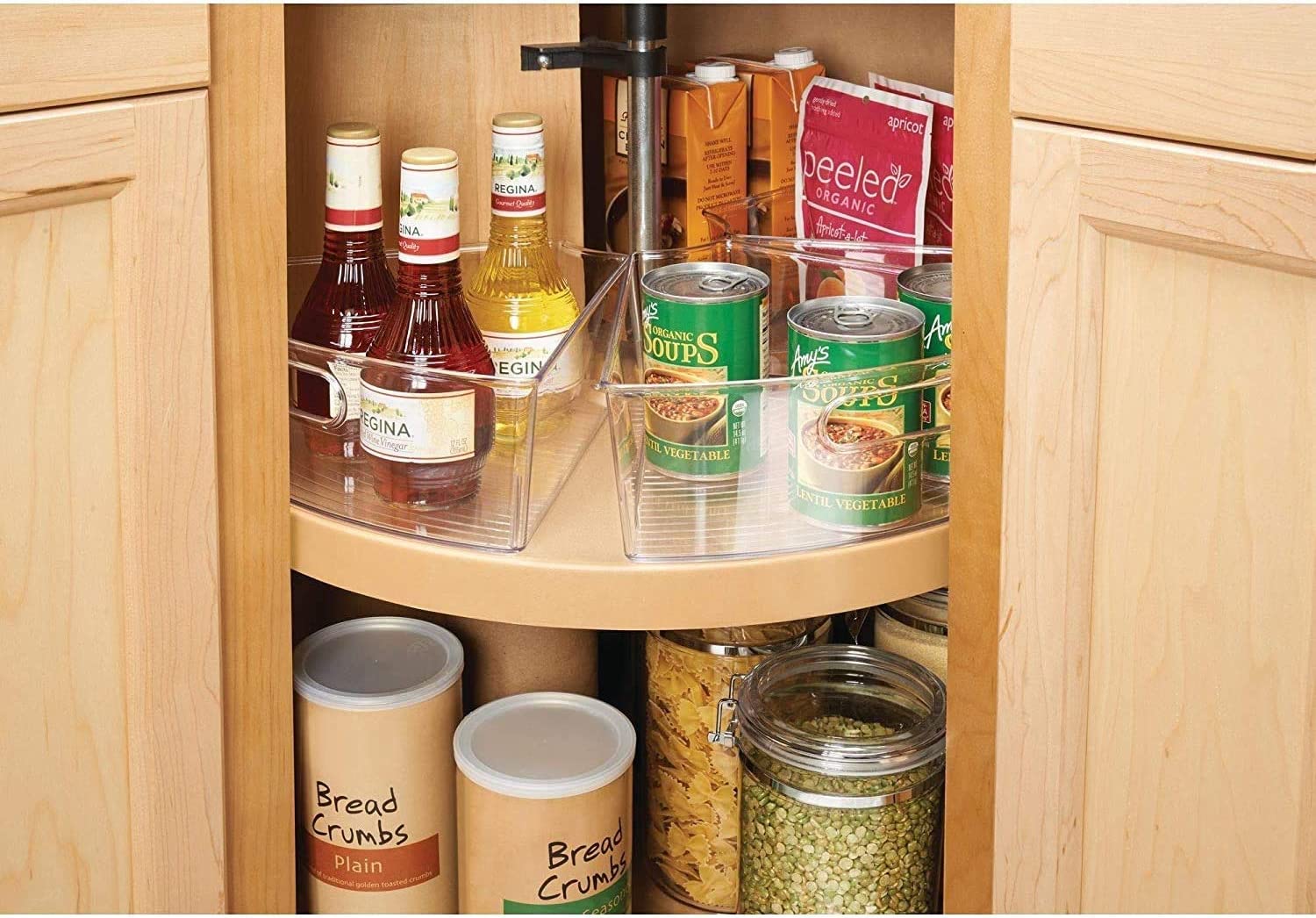
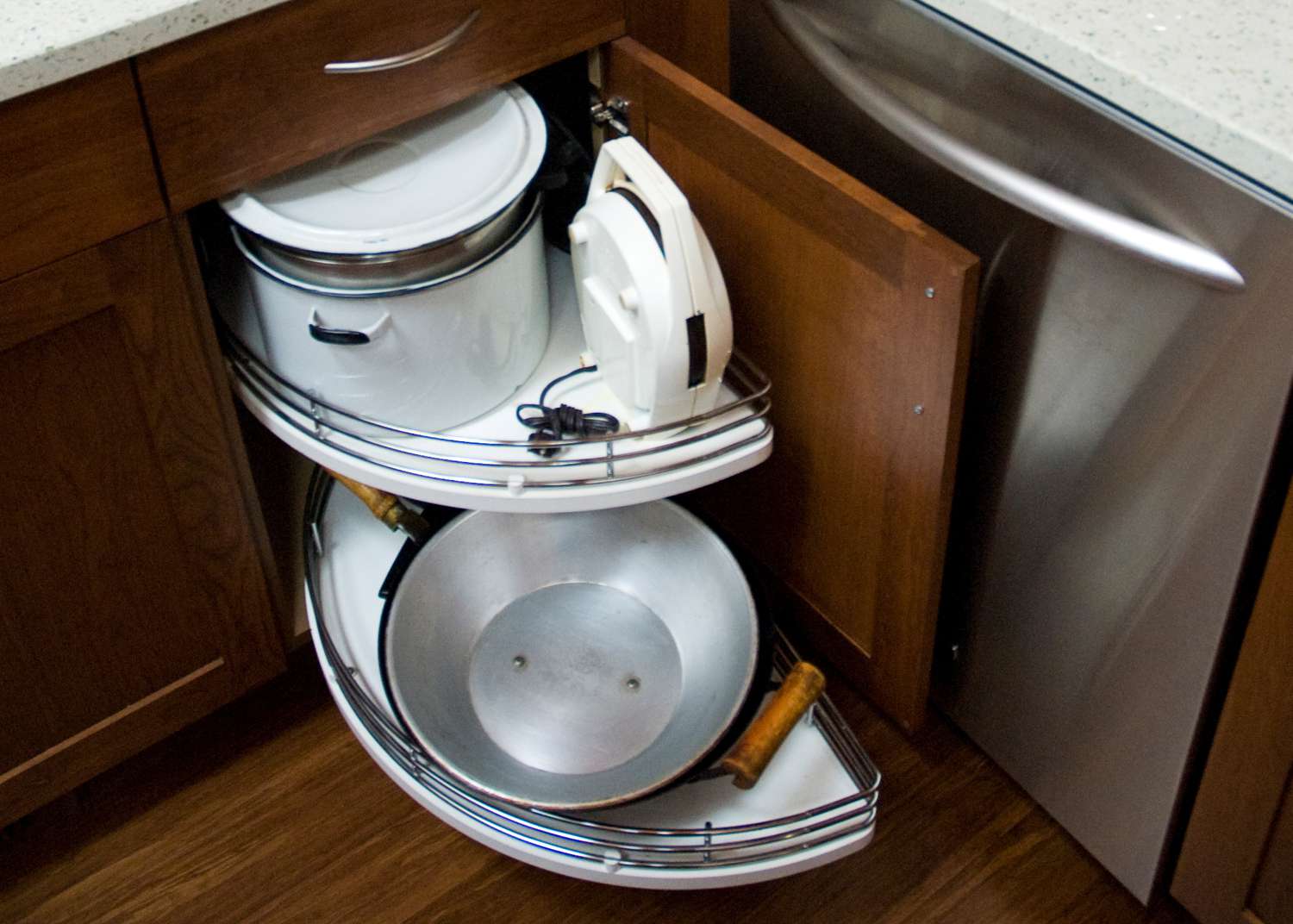
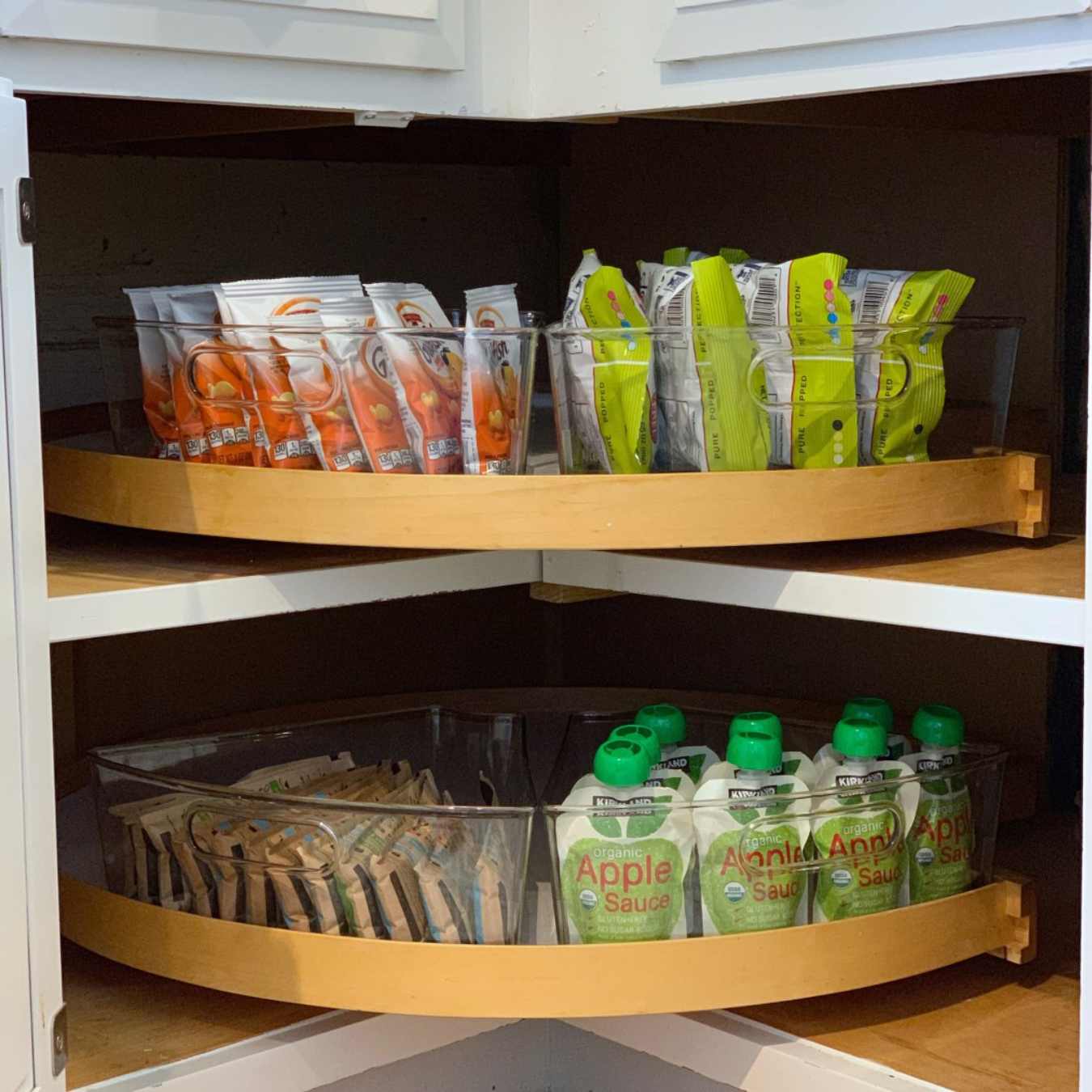
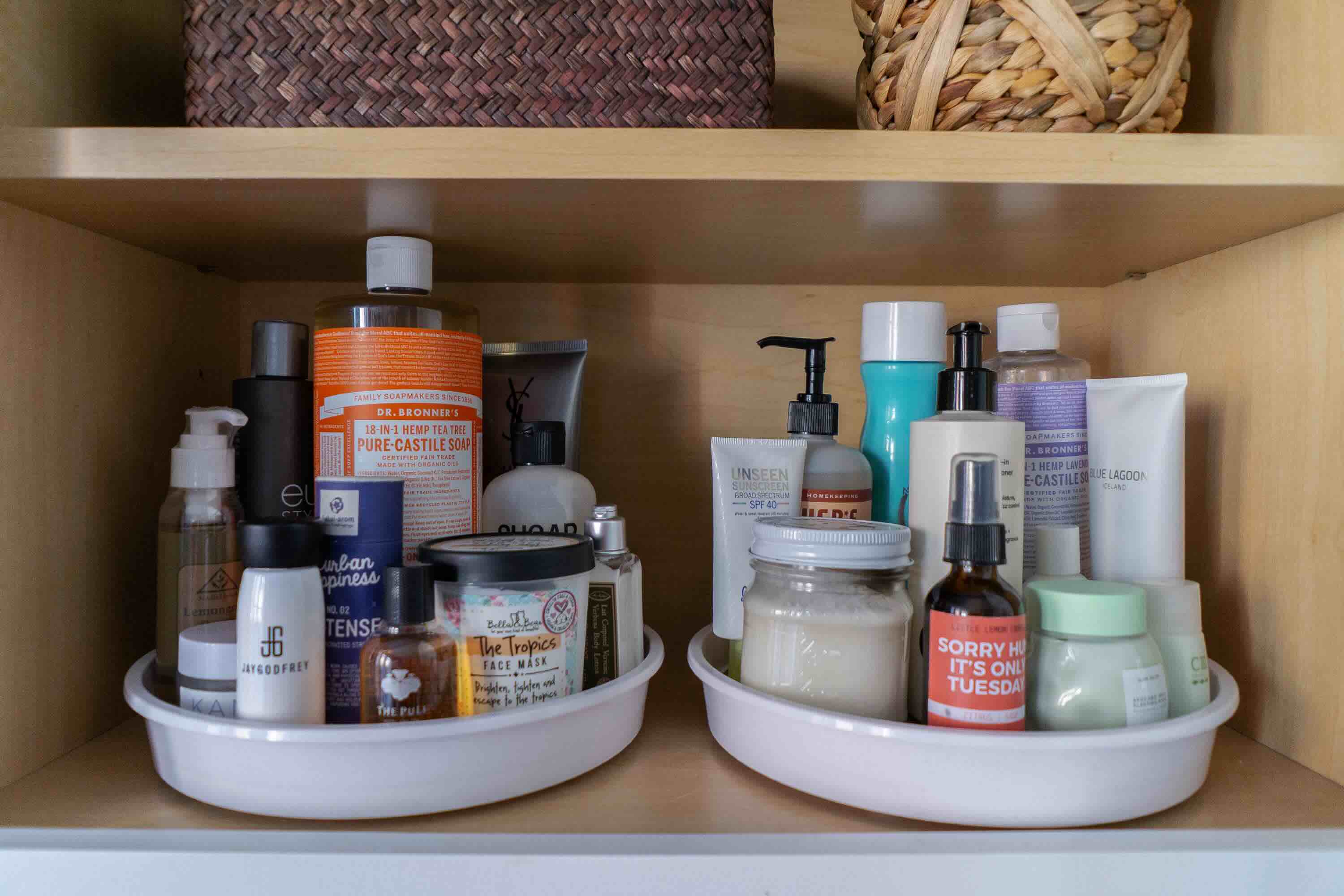
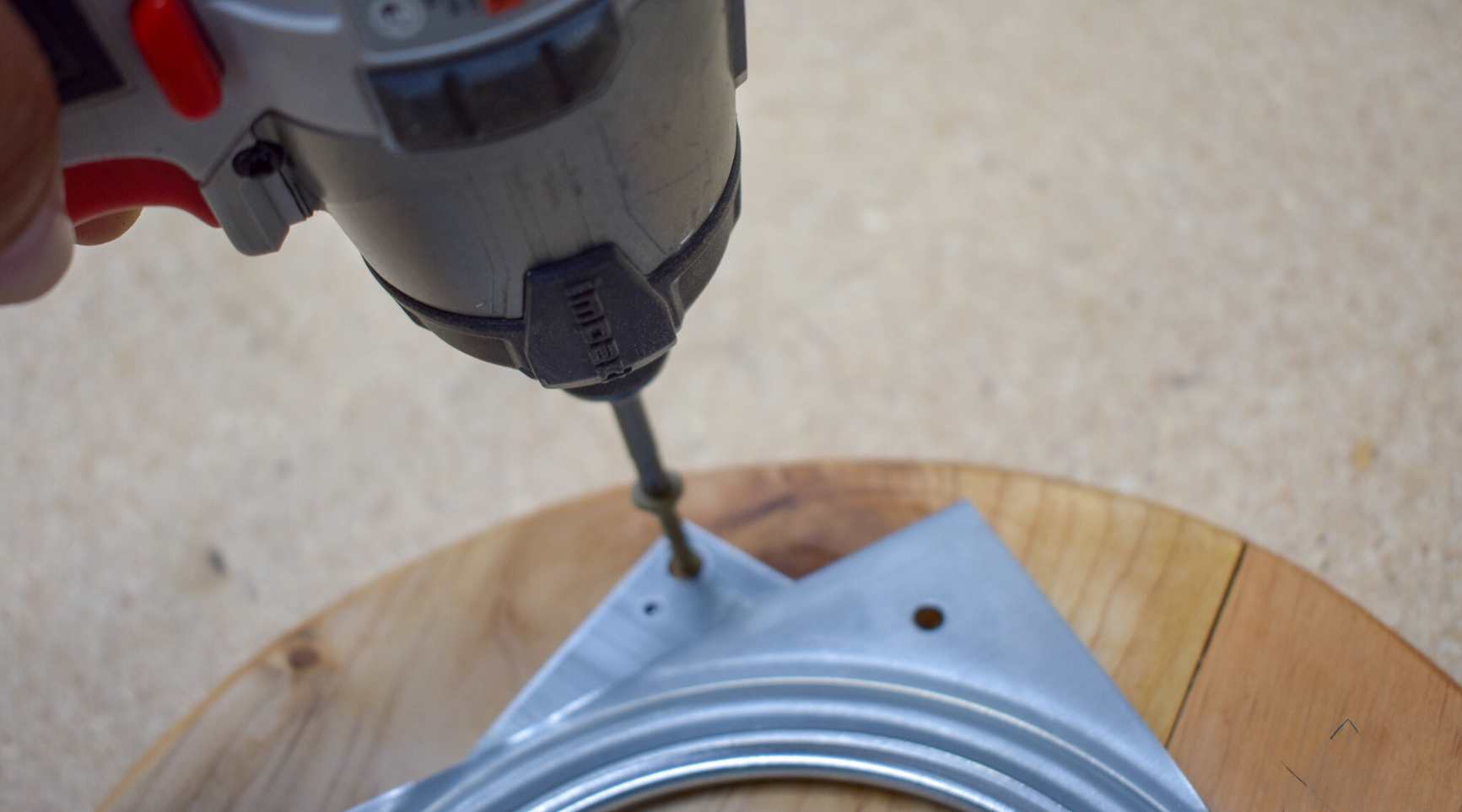
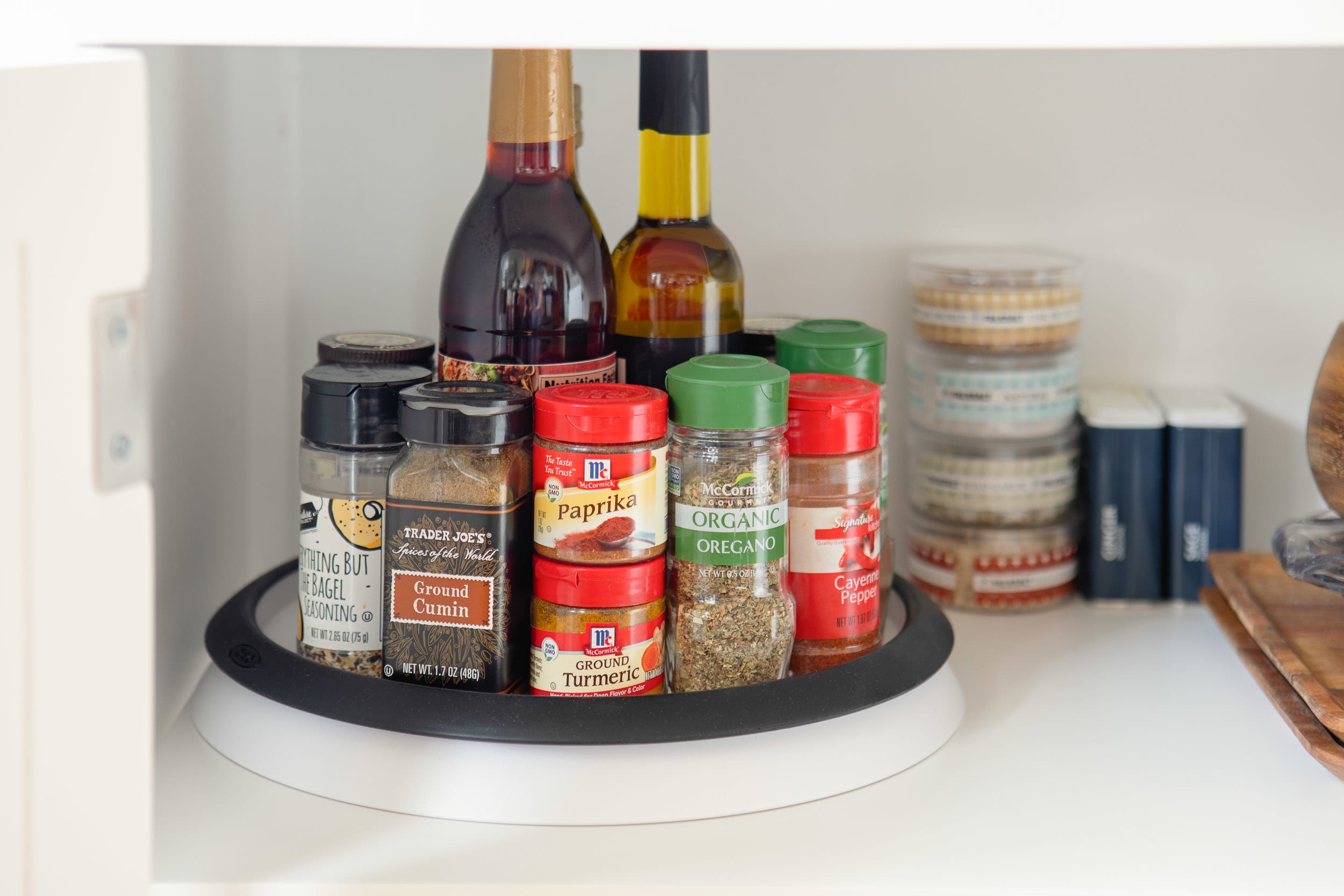




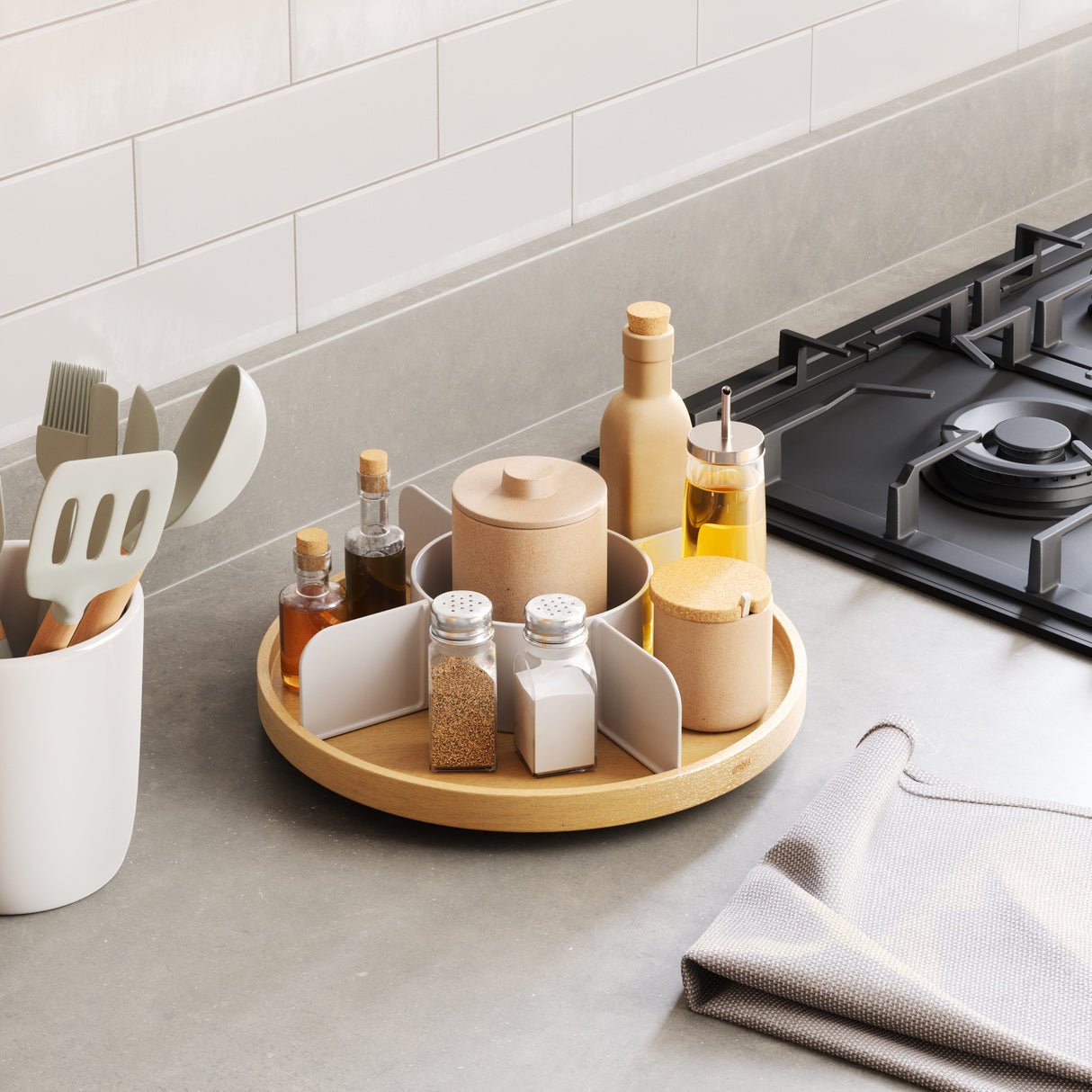
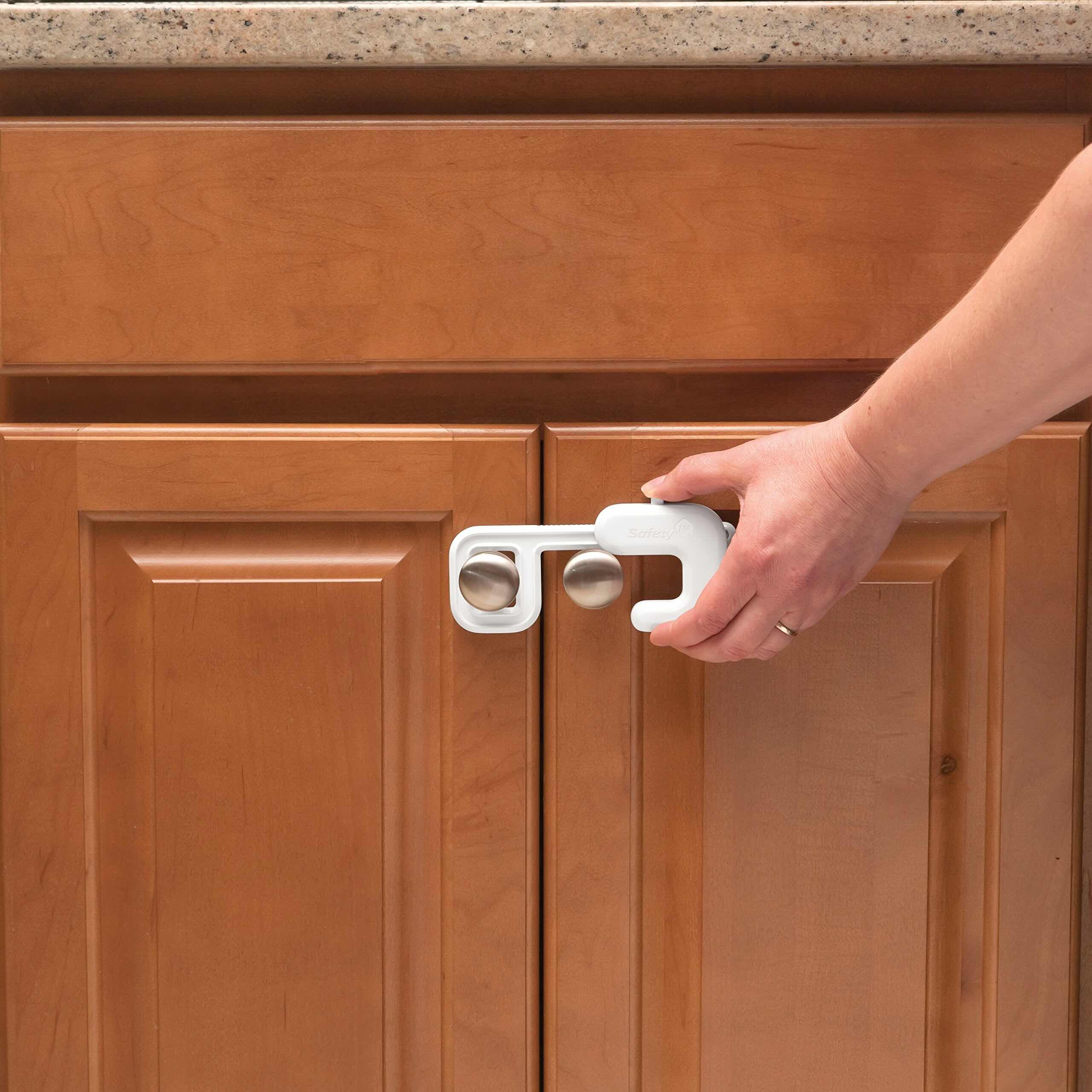
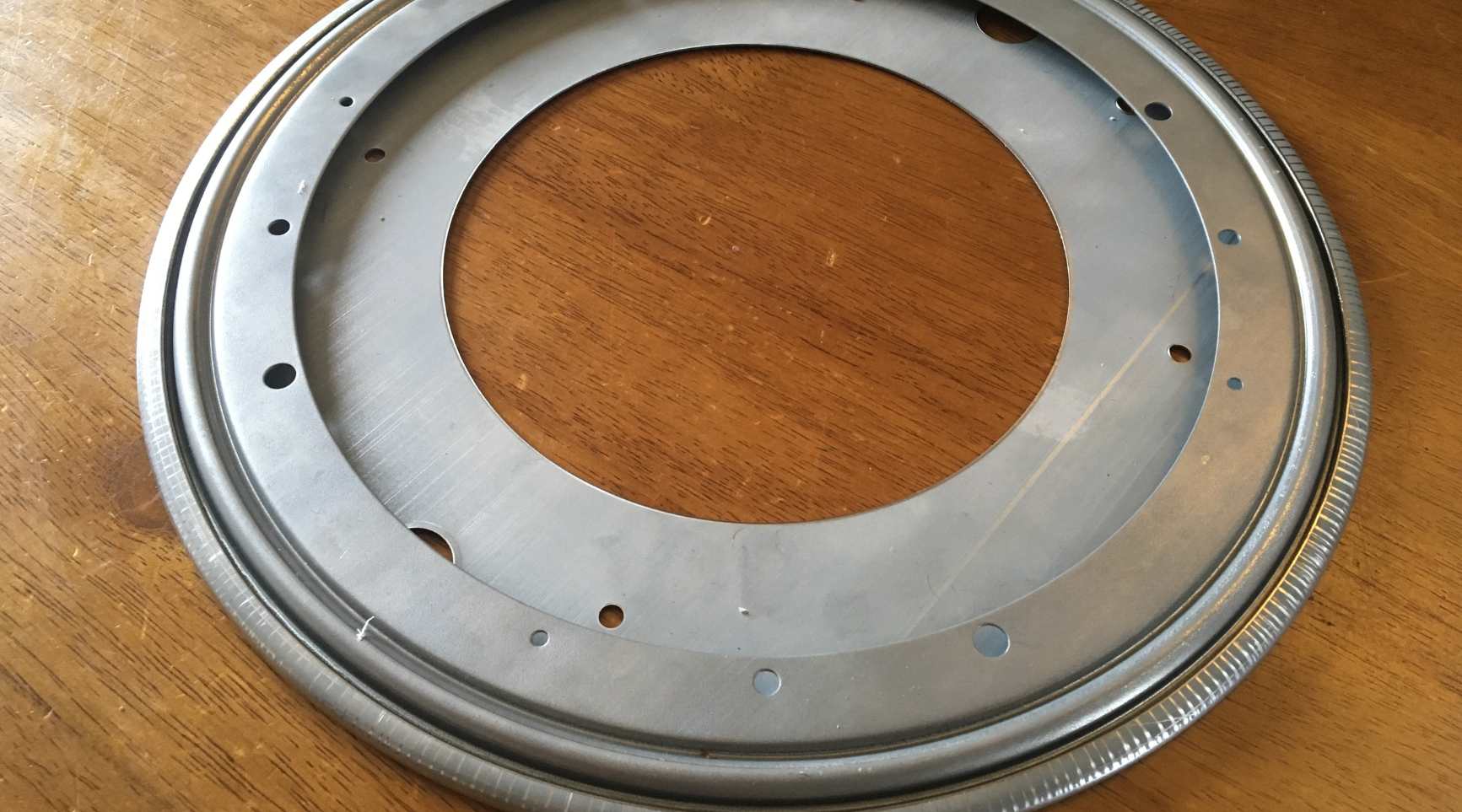


0 thoughts on “What To Put In A Lazy Susan Cabinet”